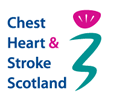Investigations and diagnosis
 When a patient is suspected of having bronchiectasis, they will be referred to a specialist respiratory clinic where a number of investigations and tests will help with diagnosis.
When a patient is suspected of having bronchiectasis, they will be referred to a specialist respiratory clinic where a number of investigations and tests will help with diagnosis.
- A full history of the patients symptoms is taken.
- Other medical conditions are considered, particularly other chest problems.
- Chest X-ray is often the first test but it is not diagnostic. It can help to rule out other possible conditions.
- High Resolution Computer Tomography (HRCT) of the chest is used to scan thin slices of lung to pick up abnormalities. This is the only test which can diagnose bronchiectasis.
- Lung function tests. Spiromerty or gas transfer tests.
- Mucus cultures to look for expected and unusual organisms.
- Blood tests for allergy markers e.g. Eosinophils, aspergillus.
- Blood tests for immunoglobulins (antibodies) which are used by immune system to neutralise bugs.
- Assessment for anxiety and depression.
- Smoking history.
- History of other associated diseases.




